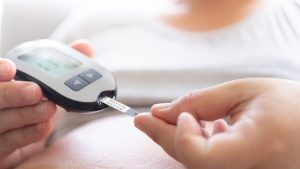Articles / Pelvic pain in teen girls: treat earlier

Around one in five girls has severe dysmenorrhea, and around half of those girls will be diagnosed with endometriosis at some stage of their life.
That is what the Pelvic Pain Foundation of Australia (PPF) has learned from delivering its Periods, Pain and Endometriosis (PPEPTalk) program to teenage girls at Australian high schools,
Rather than waiting until dysmenorrhoea transitions to chronic pelvic pain or a laparoscopy is required, PPF Chair Associate Professor Susan Evans says GPs can help teens with pelvic pain to understand their symptoms and manage their pain early on.
Associate Professor Evans, who is also a gynaecologist and pain physician, says symptoms should be considered as part of Pelvic Pain Syndrome, rather than as a series of isolated conditions.
“The first question I usually ask patients is: do you have one type of pain or a selection of pains? Most teens will describe a selection of pains,” she says.
“I ask them to describe each of their pains, where it is, aggravating and relieving factors and particularly what it feels like. I then ask about additional pain related symptoms: fatigue, poor sleep, anxiety, low mood, nausea, dizziness, brain fog and headaches. All of which are common in teens with Pelvic Pain Syndrome.”
Symptoms fit broadly in three categories: pain from pelvic organs (with or without endometriosis), pain from pelvic muscles, and pain from the central nervous system.
Pain associated with a pelvic organ, such as period pain, bowel pain, bladder pain, recurrent thrush or vulval pain, is usually the first symptom, she says. But once one pelvic organ is involved, other organs may also develop pain symptoms. In cases where chronic pelvic pain is already established, flares of pain are often triggered by a flare within a pelvic organ.

It’s common to experience a musculoskeletal response to the pelvic organ inflammation—this is often described as an aching or stabbing pain, and it can be affected by movement or position. This is often the teen’s worst pain, and the one most likely to take them to ED.
Over time, pain sensitisation in the central nervous system occurs, and this can amplify pelvic-related symptoms, resulting in fatigue, poor sleep, nausea, anxiety, low mood and difficulty concentrating.
“While endometriosis is often a part of the overall pain picture, similar symptoms can be present either with or without endometriosis. And, even where endometriosis is found, the severity of symptoms correlates poorly with the severity of lesions,” Associate Professor Evans says.
“The good news is that there is no need to wait for a laparoscopy…pain reduction can start straight away,” Associate Professor Evans says.
Treating pelvic pain syndrome may require input from a range of professionals, but Associate Professor Evans says GPs are well-placed to manage most pelvic pain symptoms.
“The majority of pain will be non-surgical and with GP help, the patient can learn to self-manage. The more she knows about her pain, the less scared she will be and the more she can take on the role of being part of the management plan,” she says.
Equally, it is important to support their families. When teens have chronic pain, it can disrupt the family unit and result in financial hardship, career disruption and relationship stress for the parents.
“Families able to maintain a relatively normal home and working environment for themselves and their other children provide a stable base for the whole family, including the affected child,” Associate Professor Evans says.
“Ensuring she stays engaged with the school system as long as possible is associated with better outcomes. A lot of students miss school, but with inactivity, pelvic muscles become stiffer and more painful, and social relationships diminish. Their brains have little to distract them and central pain sensitization worsens.”
Associate Professor Evans will be speaking at The Annual Women’s & Children’s Health Update in Adelaide, Brisbane, Melbourne, Sydney and Perth. Sign up to hear more on this and other important topics.
For more information and patient questionnaires that can help streamline consultations, visit the PPF website.

Managing Paediatric Anxiety in General Practice

OSA – Which Test for Which Patient

Musculoskeletal Health in Menopause

AHPRA-Proof Your Practice – Social Media Risks for GPs




Strongly agree
Somewhat agree
Neutral
Somewhat disagree
strongly disagree
Listen to expert interviews.
Click to open in a new tab
Browse the latest articles from Healthed.
Once you confirm you’ve read this article you can complete a Patient Case Review to earn 0.5 hours CPD in the Reviewing Performance (RP) category.
Select ‘Confirm & learn‘ when you have read this article in its entirety and you will be taken to begin your Patient Case Review.
Menopause and MHT
Multiple sclerosis vs antibody disease
Using SGLT2 to reduce cardiovascular death in T2D
Peripheral arterial disease
